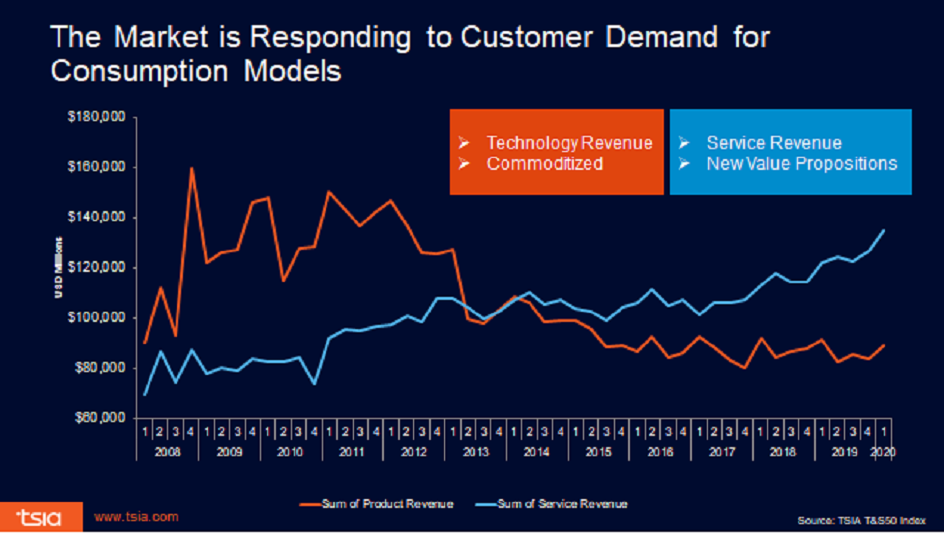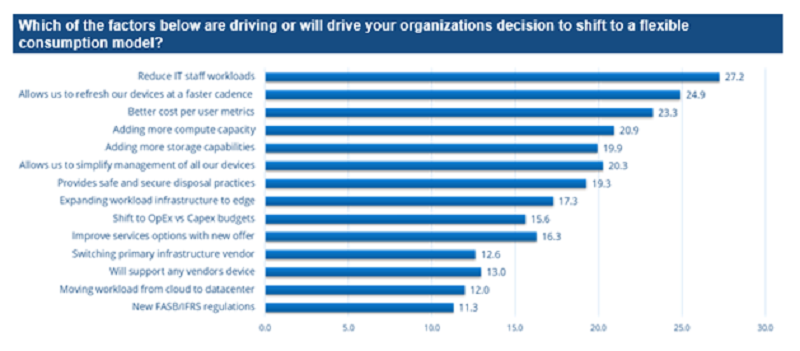
In my role supporting customer and partner discussions on our Aruba services approach, I’ve had the opportunity to hear from hundreds of professionals in various roles all interested in exploring Network as-a-Service. In these conversations, I have identified some common themes and misperceptions. Helping people to understand the facts and details in these areas, usually clears up many questions – so I offer the following as a starting point for understanding how Network as-a-Service along with flexible consumption and financing can solve key problems for organizations needing some help to unlock more value from their network environments.
Myth #1: Tech services are just a (small) add-on to tech products
To be fair to those that think this might be true, purchase of tech services as an add-on to products has been the traditional way to obtain services – and most commonly the add-on has been support services. These days, however, support services are just one part of an entire range of services – and services-led engagements are leading the way.
So, this myth is false. TSIA data shows us that the tipping point in the market occurred about five years ago. Now, most technology products are sold and delivered as-a-Service, with Software as a Service (SaaS) representing the lion’s share of the trend. This trend continues to accelerate, as more organizations acquire as-a-Service and reduce their traditional technology license purchases.

Myth #2: Interest in as-a-Service and flexible consumption is accelerating for networks due to COVID-19 impact
This myth is true. Although as-a-Service has been popular, Network as-a-Service (NaaS) has been a bit of a laggard as compared to storage and compute, for example. We have seen an uptick in interest in NaaS that started late last year – which has accelerated dramatically following COVID-19 impacts and the need the IT teams have identified of needing to increase their agility, responding to changing requirements like never before.
Aruba conducted a survey in June that reveals this acceleration in NaaS, with three related models emerging as those of high interest to IT decision makers planning for network provisioning:
- 36% are interested in subscription and as-a-Service models that relieve workload and budgets
- 35% identified managed services as their area of interest, meaning holistic NaaS approaches that include remote management of their local networks
- 20% responded that flexible financing models were of interest – including those which offer sale-leaseback, deferred payment schedules, and secure equipment upcycle/recycle options
Note: n= 2400 ITDM across some 21 countries
Myth #3: Interest in flexible consumption is driven mostly by price or leasing (OPEX) benefits
This is false. When discussing as-a-Service options, I find that sometimes people mistakenly believe that the primary benefit of the model is a lower price or the benefits of using OPEX rather than CAPEX budget for the tech purchase. This is certainly part of the benefit. But, primary benefits of flexible consumption are the TCO advantages that come from simplifying network management and equipment handling which are inherent to as-a-Service delivery.
IDC conducts annual surveys that show us what organizations expect when they acquire as-a-Service solutions. IDC reports the following results:

As you can see in the table, the leading factors that drive their purchases across all infrastructure as-a-Service including networking, include reducing IT staff workloads, faster pace equipment refresh, better cost per user metrics, capacity management, simplification of device management, and other factors that have to do with ease and speed. The shift from CAPEX to OPEX is also reported, but not as the leading factor.
Source: IT Procurement Trends and Consumption Models Survey, IDC, October. N= 300.
Myth #4: The cost of as-a-Service solutions is higher than traditional CAPEX
Yes, the price of as-a-Service solutions is higher – but the cost savings over time is much lower in these ways:
- There is enormous savings in time to manage that comes from workflow automation, data analytics and efficiencies.
- There is the better value delivered by the network and in the connected experience that organizations enable for their end-users, partners and communities – and the disruption in their work efforts that is prevented by optimized network performance.
- Significant benefits are also obtained in the recurring renewals process and budget acceleration, when you consider the costs of avoiding purchase cycles along with the credit unlocked from existing and older equipment.
To explore how the lower Total Cost of Operations can benefit your organization and reduce your network costs and overheads, I would suggest you take a look at our Value Creation Calculator for NaaS.
Myth #5: As-a-Service and flexible consumption are synonymous terms
False. More often than not, people often think of these terms as being synonymous. But in reality, as-a-service includes both flexible consumption and flexible financing. Flexible consumption is a component of as-a-service.
Aruba provides options for all of the as-a-Service options that are being explored by organizations for networks, including:
- SaaS models which offer subscriptions for software with automated server management, both in the cloud and on-prem
- NaaS models which offer holistic services across the entire lifecycle combining hardware, software and service delivery
- Financial Services for which we partner with the HPEFS organization to offer the best and most competitive options
Kelly Baig
Hewlett Packard Enterprise
